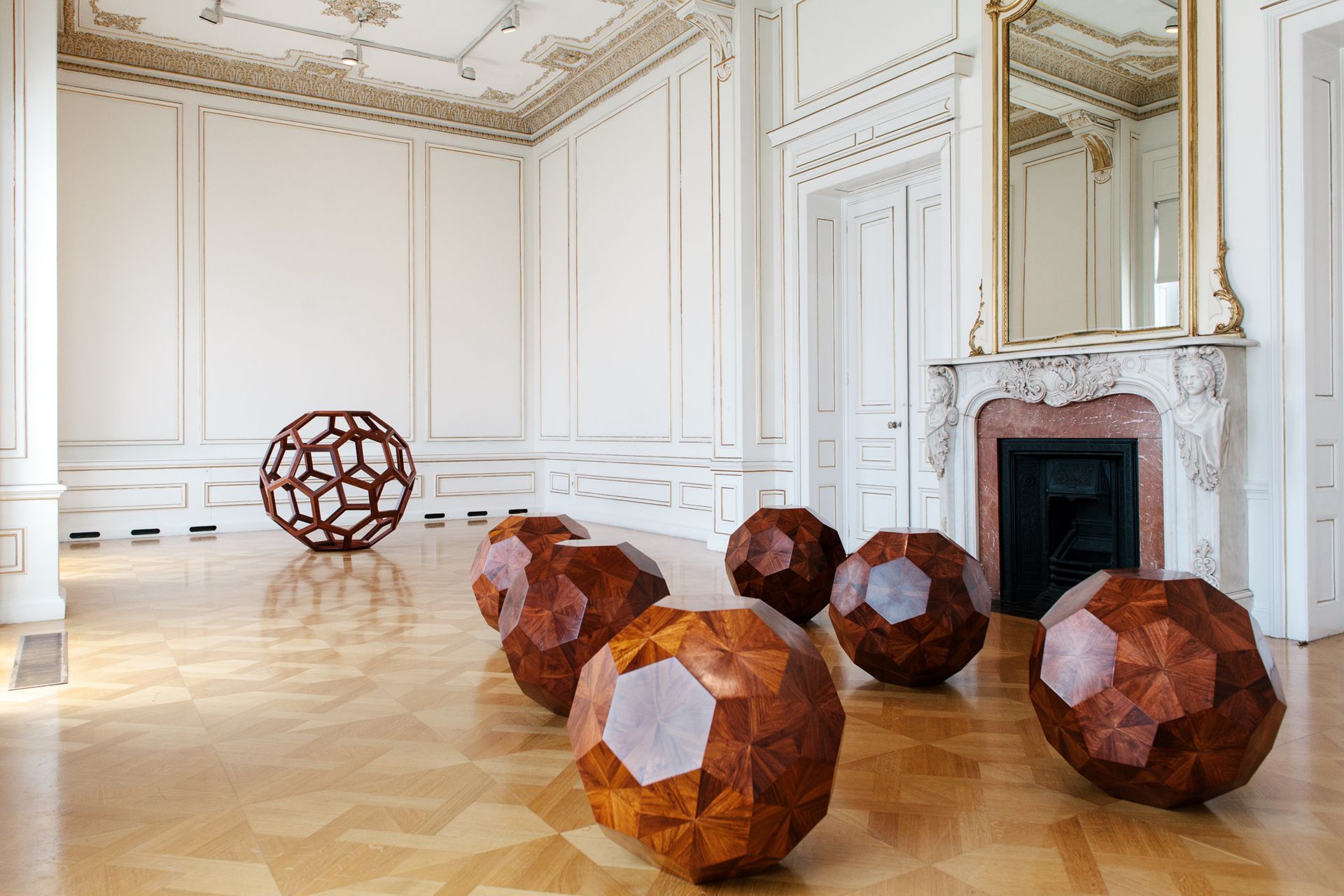Three flags fly high above the Cycladic Museum of Art in Athens. One is the flag of Greece; another is of the European Union. The third depicts the outline of the body of Aylan Kurdi, the three-year-old Syrian boy of Kurdish ethnic background who drowned in the Aegean Sea in September.
The three flags, created out of gold and silver satin to look like the emergency thermal blankets given to refugees, are all works by the Chinese artist Ai Weiwei, whose first exhibition in Greece opened at the Cycladic museum today (19 May). Ai famously sparked international outcry for posing as Aylan Kurdi for a shoot for India Today, but the artist says we should not “sentimentalise or romanticise” the crisis, which has seen more than 2,000 children die on their way to Europe. “You can’t use everyday moral judgement to say that [Aylan’s death] is forbidden,” he says.
Ai says gold and silver are the first colours children often see when they arrive on the Greek island of Lesbos, where volunteers hand out foil blankets. “They look like angels when the blankets blow in the wind,” the artist says.
Ai first visited Lesbos on Christmas Day last year, and has since dedicated most of his life to helping refugees there, even moving his studio to the island. Now the artist has devoted half of his exhibition at the Cycladic museum to new works that reflect the humanitarian crisis engulfing Europe.
“I felt like I’d dropped into a deep, dark hole,” Ai says of his first visit to Lesbos, where 80% of refugees arriving in Europe first land. “We were driving by the water and I saw an empty boat floating in the ocean. I jumped out of the car and got into this half sunken boat. I stayed there for quite some time, meditating as I floated out into the ocean. It was then I decided to move my studio to Lesbos.”
Other works in the exhibition, titled Ai at the Cycladic (until 30 October), that respond to the refugee crisis include iPhone Wallpaper (2016), a collage of 12,030 images shot by Ai on his smartphone between January 2015 and April 2016, and Lesvos Photographs (2015-16), a series of 600 images taken by members of the Photographic Society of Mytilene, which “give a human face to the crisis”, says the exhibition’s curator Michael Frahm. Three new short films have been shot in the waters around Lesbos.
Ai has also created new marble works for the exhibition. Tyre (2016) consists of rubber lifebuoy rings hewn in black and white marble, which has been sourced in China. “The marble used in Cycladic art is very similar to that found in the Ding province, which is traditionally used to create Buddhist statues,” Ai says. Meanwhile, Standing Figure (2016) is Ai’s life-size take on miniature Spedos figurines in the Cycladic museum’s collection.
Elsewhere, Ai's works are installed among the collection. Tear Bottle/Tear Gas Canister (2016) juxtaposes tear gas canisters used on refugees in the Idomeni camp with ancient Greek vessels that were used to collect tears from mourners.
Despite its archaeological setting—the Cycladic museum is dedicated to the ancient cultures of the Aegean and Cyprus—the show is ultimately about “this time and this location”, Ai says. “The goal is to make everyone conscious of the struggle of refugees. We need to protect humanity. The fight is endless. If we don’t fight, our children have to fight,” he says.
Ten percent of all the exhibition proceeds will go to Médecins Sans Frontières and the Greek NGO METAdrasi.


